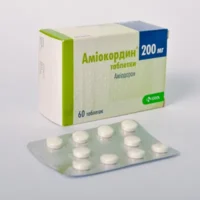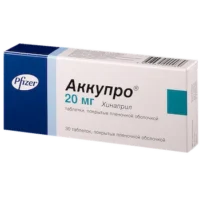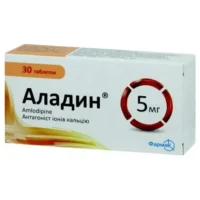Description
Enalapril (Enalapril) Tablets 10 mg. №20
Composition
Each tablet contains Enalapril as Enalapril Maleate.
Mechanism of Action
Enalapril, an ACE inhibitor, inhibits the angiotensin-converting enzyme, leading to vasodilation and decreased aldosterone secretion. This results in reduced blood pressure, improved cardiac function, and decreased workload on the heart.
Pharmacological Properties
Enalapril is a prodrug that is hydrolyzed in the liver to its active form, enalaprilat. It selectively inhibits ACE, preventing the conversion of angiotensin I to angiotensin II. This leads to vasodilation, decreased aldosterone secretion, and reduced sodium retention.
Indications for Use
- Treatment of hypertension
- Management of heart failure
- Improvement of survival post-myocardial infarction
Contraindications
Do not use Enalapril if you are pregnant, have a history of angioedema related to previous ACE inhibitor use, or are allergic to ACE inhibitors.
Side Effects
Common side effects may include dizziness, cough, hypotension, and hyperkalemia. Rare but serious side effects include angioedema, renal impairment, and neutropenia.
Usage Instructions
The usual starting dose is 5 mg once daily. Dosage adjustments should be made based on individual response. Enalapril can be taken with or without food.
Benefits Compared to Analogues
Enalapril is favored for its long-lasting effects, allowing for once-daily dosing. It is considered a first-line treatment for hypertension and heart failure due to its proven efficacy in reducing cardiovascular events and improving patient outcomes.
Suitable Patient Groups
Enalapril is suitable for adults of all ages, including the elderly. It may also be used in pediatric patients under appropriate medical supervision.
Storage and Shelf Life
Store Enalapril tablets in a cool, dry place away from moisture and sunlight. Check the packaging for the expiration date and do not use after the stated shelf life.
Packaging Description
Each package contains 20 tablets of Enalapril 10 mg strength.





